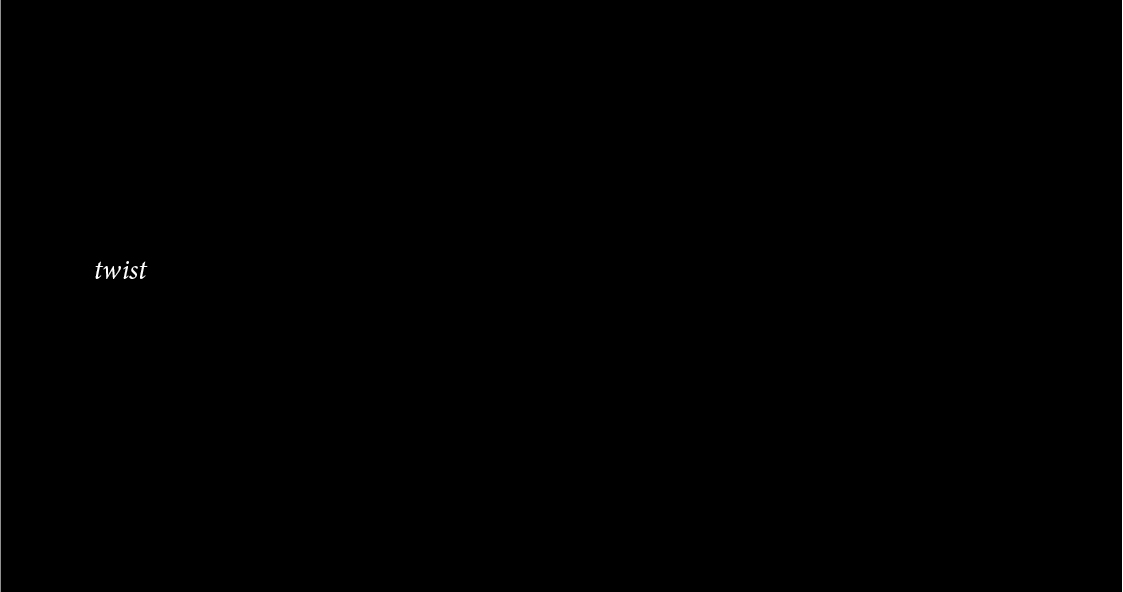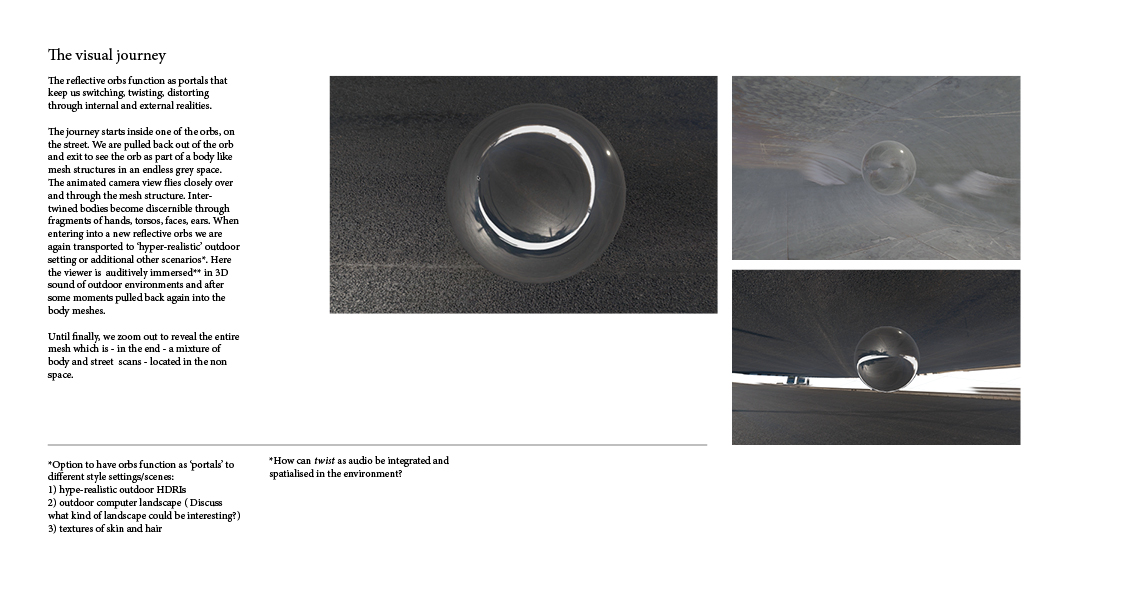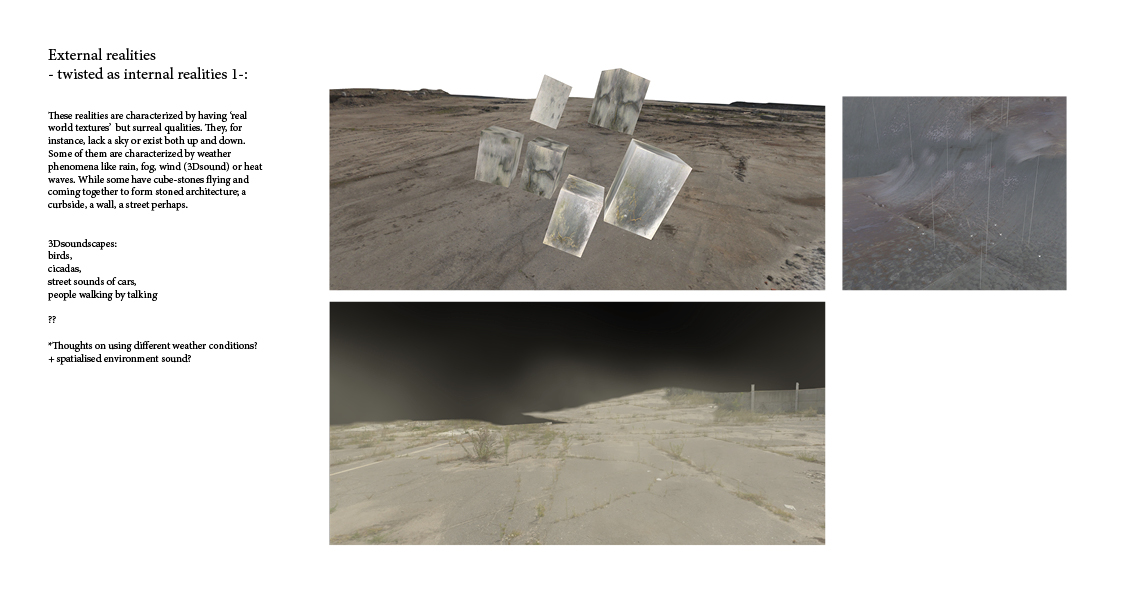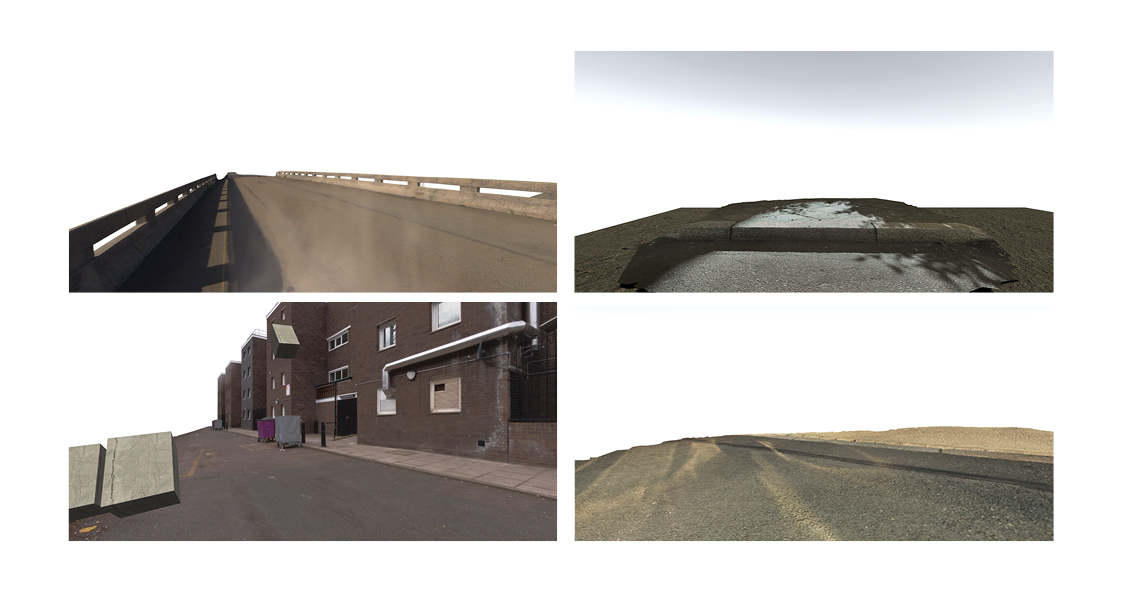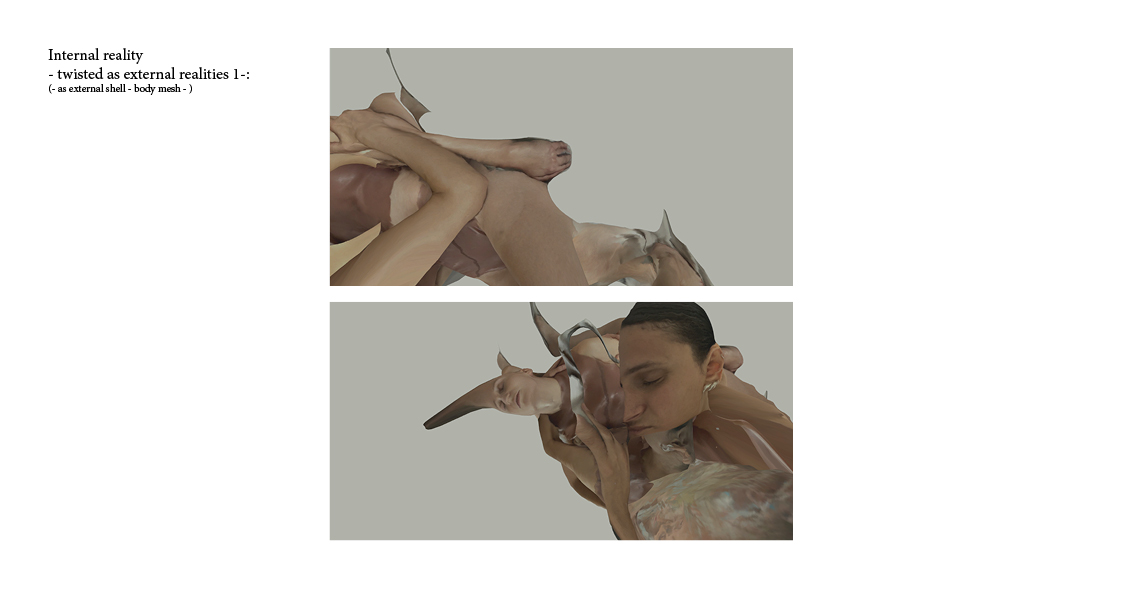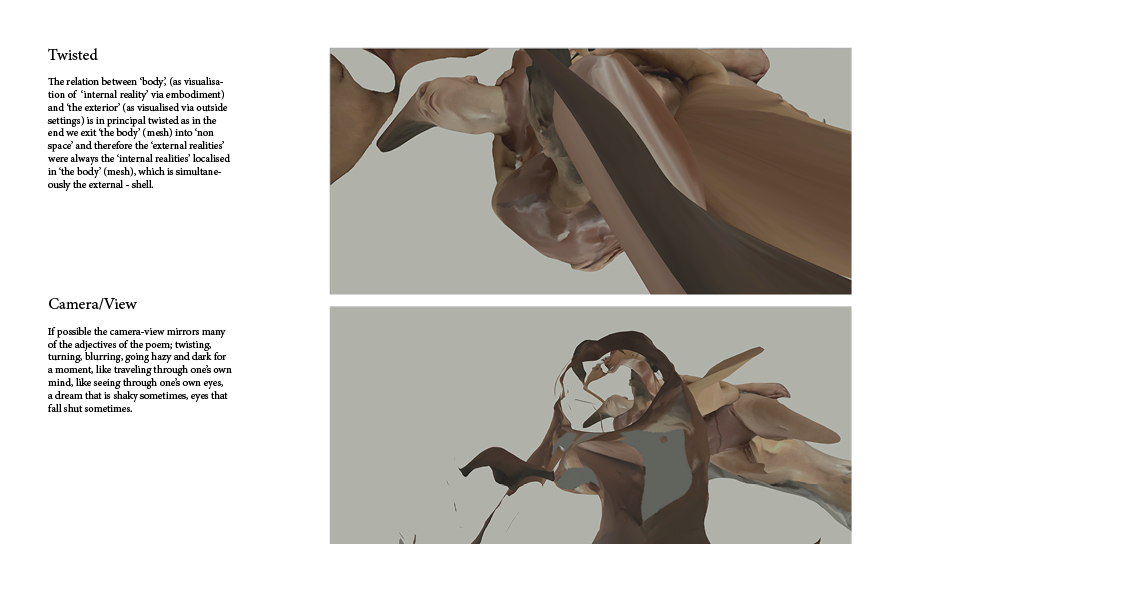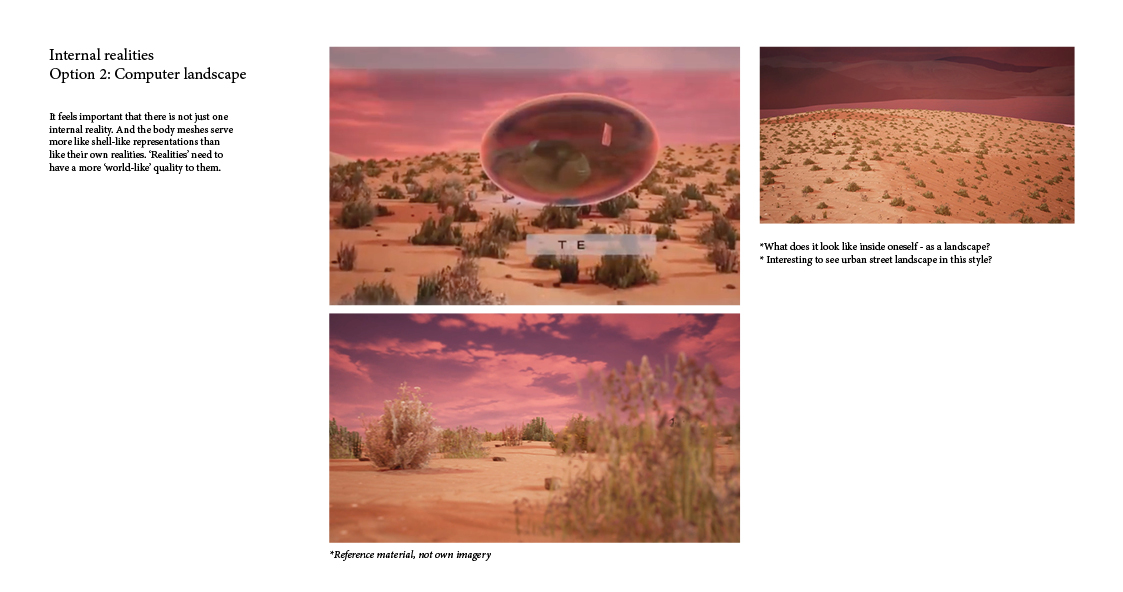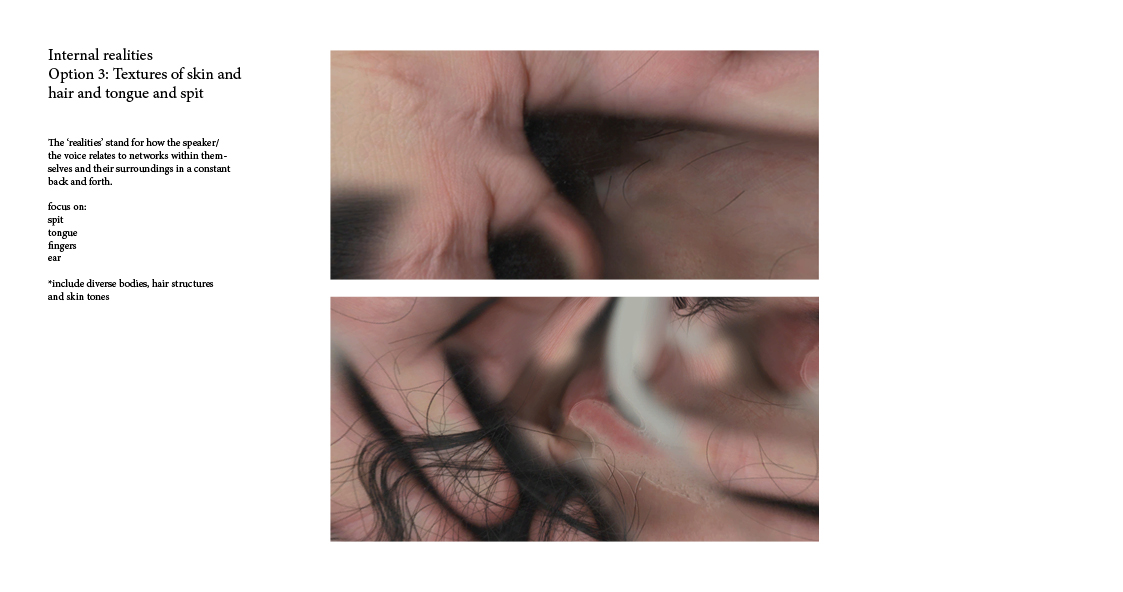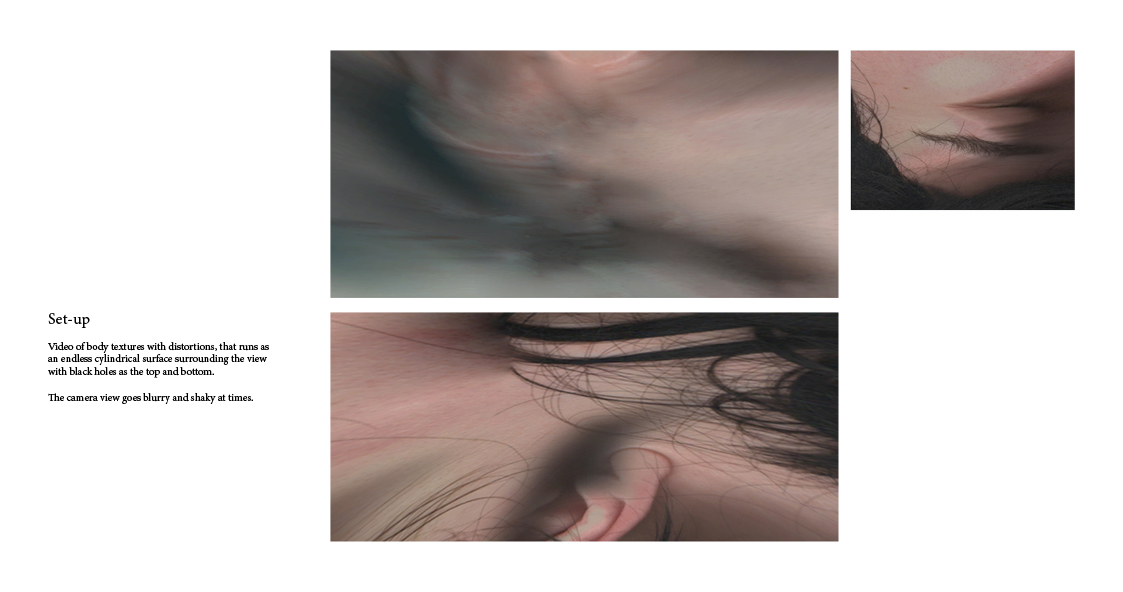mNo edit summary |
m (→Overall) |
||
| (15 intermediate revisions by the same user not shown) | |||
| Line 12: | Line 12: | ||
In the poem the external space - conjured up through words like 'street', 'pavement', 'dry asphalt' is speaking about internal realities of the protagonist(s). | In the poem the external space - conjured up through words like 'street', 'pavement', 'dry asphalt' is speaking about internal realities of the protagonist(s). As a first space to visualise this much spoken about 'external reality' in the VR space, I (more and less) heavily edited HDRI images to create a 'hyperreal - texture - environment' , that feels both 'real' and imagined/surreal at the same time. | ||
Into this space I bring a mixture of 3D models created with Photogrammetry (see documentation previous semester) and photographed textures (e.g. rock) onto simple cube geometries. | Into this first space I bring a mixture of 3D models created with Photogrammetry (see documentation previous semester) and photographed textures (e.g. rock) onto simple cube geometries. | ||
The | The multiple outdoor scenes I created in this way, are further vitalised by using weather apparitions like swirling heat, rain or dust clouds from the Unity Particle Pack, as well as animating the cubes to fly past the viewer and come together in architectonic formations. | ||
[[File:twist documentation WS2020.jpg]] | [[File:twist documentation WS2020.jpg]] | ||
| Line 25: | Line 25: | ||
== Space 2 - Internal realities as exterior shell == | == Space 2 - Internal realities as exterior shell == | ||
The | The external reality is in a kind of duelling, twisting relationship with the internal reality. The internal space is translated as the idea of 'bodies / bodily-ness'. The photogrammetric-models of bodies form the 'main frame' of the entire VR experience. It is not the space/scene where the viewer starts but it is within these twisted, distorted body formations that the spherical, metallic orbs are positioned, which function as the portals/entry-ways to all other scenes and thus, it is within these bodies that the other spaces exist. | ||
[[File:twist documentation WS20205.jpg]] | |||
[[File:twist documentation WS20206.jpg]] | [[File:twist documentation WS20206.jpg]] | ||
== Additional spaces include: Internal Space 2: External reality as external 'mind space' / Computer style landscape == | |||
I am very interested in contrasting different styles of digital visualisation to represent the same idea. I feel that this creates a more rich and complex space for the viewer to dive into. Therefore, to mix different visual styles I also want to experiment/embrace a more 'game-ified' look. An option is to create a natural landscape through Unity's 'Terrain tool' and downloadable Pre-fabs. | |||
to be continued .. | |||
[[File:twist documentation WS20207.jpg]] | |||
''* images from Keiken collectives 'Feel my Metaverse', 2019'' | |||
== Space 4: Internal reality as High resolution textures of body == | |||
The poem also makes use of more direct and also visceral language relating to the body; 'spit', 'ears', 'tongue', etc. | |||
My approach to bring a more 'close-up', direct experience of the body into the game-engine is to create high resolution textures of bodies and convert them into abstract collages. I plan to animate these images and bring them into the space as a video texture on an endless, cylindrical tube that surrounds the viewer. | |||
For this I am still sourcing more varied bodies, skin tones, hair structures etc. than my own. | |||
[[File:twist documentation WS20208.jpg]] | |||
[[File:twist documentation WS20209.jpg]] | |||
<gallery> | |||
File:earcollage.jpg | |||
File:facecollage.jpg | |||
File:Handcollage.jpg | |||
File:spitcollage.jpg | |||
</gallery> | |||
== Overall == | |||
Overall, I would summarise that I spent the semester further figuring out how I can bring varied, visual textures and elements into the VR space. I do this with the overall aim of finding my own visual language in immersive, digital space, by creating environments that build upon elements that feel more 'real' and tangible that the pre-fab computer-game-look. | |||
In the continuation of this project I will bring these visual scenes together through animating the timeline and incorporating the audio, which is the heart of the work. | |||
Latest revision as of 13:50, 27 March 2021
Concept
This semesters work is a continuation of the VR - poem 'twist / the edges to dry asphalt' created in a collaborative work with the poet Malina Heinemann in response to her poem 'twist' as performed at 'drift' (Horse and Pony in Berlin) in 2019.
The VR work and creative process this semester centres around the translation and abstraction of elements of the spoken word poem into interconnected three-dimensional, digital spaces inside one VR space.
While it was not possible to work in the DBL - and make real technical progress or get a more hands-on understanding of the physical-digital-space - do to the pandemic restrictions, I was able to make some progress on the conceptual stages of the VR experience and how these 'stages/spaces' relate to and connect within one another.
Space 1 - External realities as internal realities
In the poem the external space - conjured up through words like 'street', 'pavement', 'dry asphalt' is speaking about internal realities of the protagonist(s). As a first space to visualise this much spoken about 'external reality' in the VR space, I (more and less) heavily edited HDRI images to create a 'hyperreal - texture - environment' , that feels both 'real' and imagined/surreal at the same time.
Into this first space I bring a mixture of 3D models created with Photogrammetry (see documentation previous semester) and photographed textures (e.g. rock) onto simple cube geometries.
The multiple outdoor scenes I created in this way, are further vitalised by using weather apparitions like swirling heat, rain or dust clouds from the Unity Particle Pack, as well as animating the cubes to fly past the viewer and come together in architectonic formations.
Space 2 - Internal realities as exterior shell
The external reality is in a kind of duelling, twisting relationship with the internal reality. The internal space is translated as the idea of 'bodies / bodily-ness'. The photogrammetric-models of bodies form the 'main frame' of the entire VR experience. It is not the space/scene where the viewer starts but it is within these twisted, distorted body formations that the spherical, metallic orbs are positioned, which function as the portals/entry-ways to all other scenes and thus, it is within these bodies that the other spaces exist.
Additional spaces include: Internal Space 2: External reality as external 'mind space' / Computer style landscape
I am very interested in contrasting different styles of digital visualisation to represent the same idea. I feel that this creates a more rich and complex space for the viewer to dive into. Therefore, to mix different visual styles I also want to experiment/embrace a more 'game-ified' look. An option is to create a natural landscape through Unity's 'Terrain tool' and downloadable Pre-fabs.
to be continued ..
* images from Keiken collectives 'Feel my Metaverse', 2019
Space 4: Internal reality as High resolution textures of body
The poem also makes use of more direct and also visceral language relating to the body; 'spit', 'ears', 'tongue', etc.
My approach to bring a more 'close-up', direct experience of the body into the game-engine is to create high resolution textures of bodies and convert them into abstract collages. I plan to animate these images and bring them into the space as a video texture on an endless, cylindrical tube that surrounds the viewer. For this I am still sourcing more varied bodies, skin tones, hair structures etc. than my own.
Overall
Overall, I would summarise that I spent the semester further figuring out how I can bring varied, visual textures and elements into the VR space. I do this with the overall aim of finding my own visual language in immersive, digital space, by creating environments that build upon elements that feel more 'real' and tangible that the pre-fab computer-game-look.
In the continuation of this project I will bring these visual scenes together through animating the timeline and incorporating the audio, which is the heart of the work.
